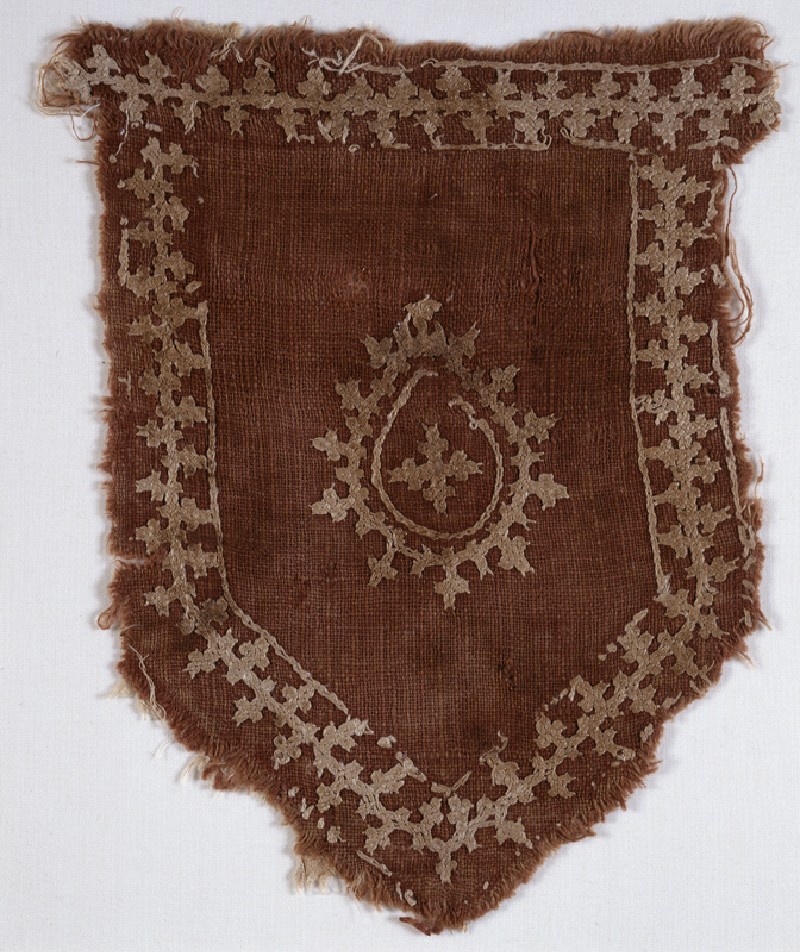
A rare Mamluk-period red cotton tab embellished with the Armenian Marash embroidery
The tab that belongs to the Mamluk period was discovered in Fustat (the first capital of Egypt under Muslim rule and the historical center of modern Cairo), created in the Near East by Armenians or for Armenians (Tab with linked crosses and pear-shaped medallion, late 13th century – early 14th century, Mamluk Period (1250 – 1517), Ashmolean Museum, University of Oxford, EA1993.240). This piece is considered valuable also due to its age: as determined, it was created between the 13th and 14th centuries.
It is of red cotton with a linen backing. The interlaced embroidery is only stitched on the red cotton, while the chain stitch which frames the tab border goes through to the linen backing.
According to the museum website description, the embroidery stitch on this tab is claimed by the Armenians, who call it “heusvadr gar.” It is a complex stitch worked in two stages by lacing threads through a foundation of herringbone stitches to form small crosses that can be arranged singly, in lines and medallions. The link with a traditional style of Armenian embroidery raises the question of whether this fragment was imported or made in Cairo by Armenians who had settled in this tremendous cosmopolitan center of the Arab world. The designs do not provide a conclusive answer, but, interestingly, one in this category is embroidered with a fleur-de-lys.
It’s worth mentioning that the formal qualities of the embroidered patterns draw them closer to the Marash embroidery. Needlework, part of applied arts, has been part of Armenian culture since immemorial. Armenian needlework is rich and versatile, as various towns and provinces before the Armenian Genocide of 1915 used their peculiar methods of embroidering. Marash, a city in Cilician Armenia, was particularly famous for its embroidery. W.J. Childs, in the preface of his book “Across Asia Minor on Foot” (1907), writes, “…you can also see pieces of Marash needlework done by young ladies. It is a kind of embroidery named after the town. People in Marash make a living by home crafts”.
Created by weaving a surface pattern through a lattice framework of two rows, it was initially used for decorating various household textiles, usually furnishings. Although embroidery is now extinct in its original location due to the Armenian Genocide, it is still practiced by Armenian women throughout the Diaspora.
The style of needle-point that developed in Marash involves distinct patterns – with names ranging from the mundane (“cup”) to the more mystical (“flower of seven mountains”) – not infrequently echoing architectural motifs such as knotted engravings or crosses found elsewhere in the Armenian highland. They often consist of stitches in blue or red over dark backgrounds, stringing in pearls, or using gold or silver thread for essential items.









